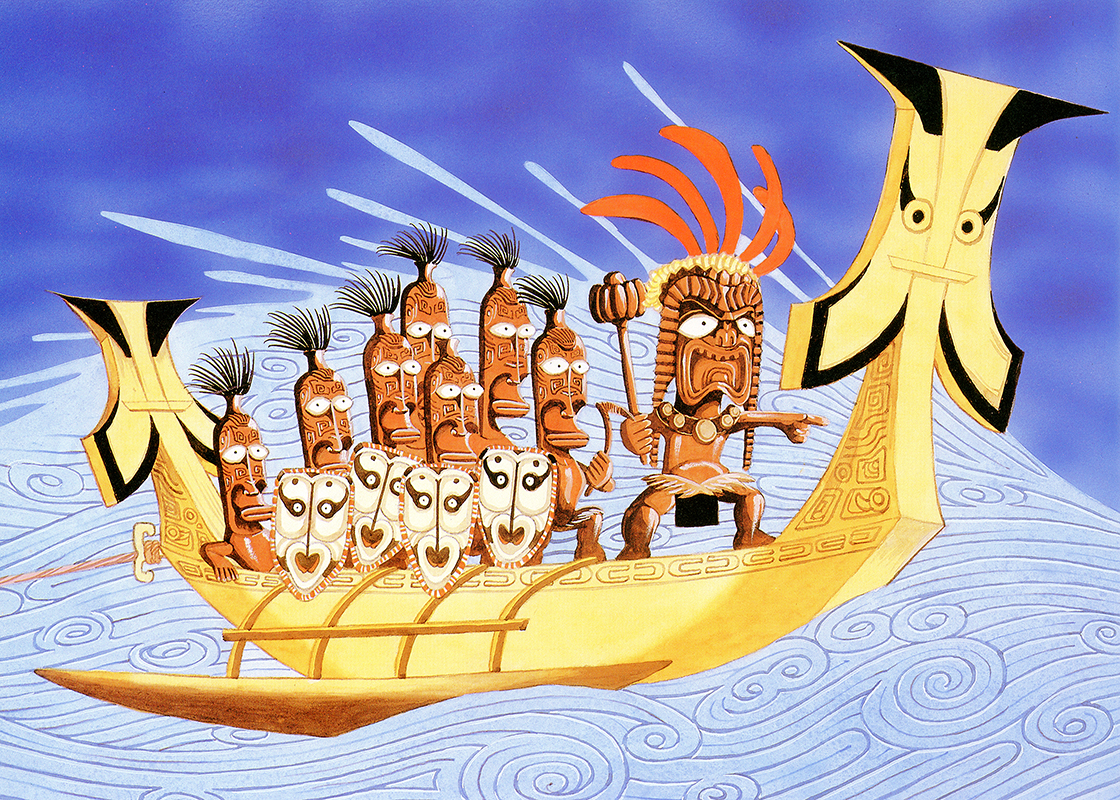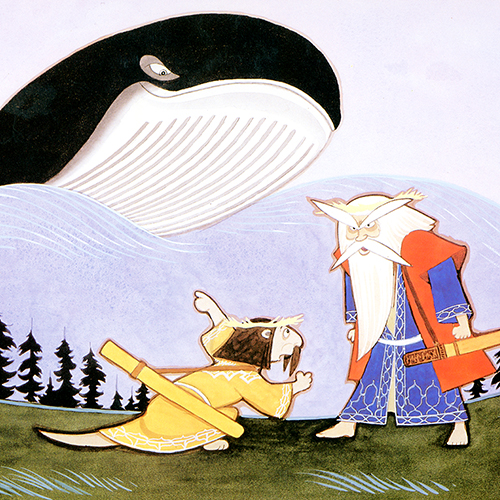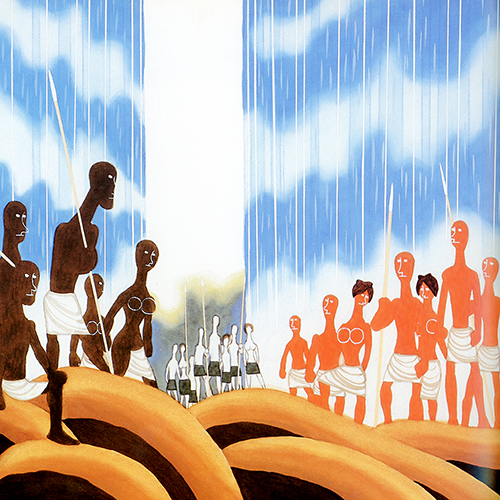
STORY
The myth of the Ocaina tribe of Andes
When humans were still only eating soil, a girl fell in love with a snake and bore a child. The child grew up into a tree, which produced corn and Manioku. As a result, humans were able to live without wanting for food. This book is one of the myths about the creation of the Earth.
The myth of the Mel tribe of Kenya
At the beginning of the world, ancestors of the Mel tribe lived peacefully on their island. When people in red clothes invaded the island, the Mel tribe had to escape from their own land. While they were journeying on the sea, their skin changed color, creating red, black, and white people. Among them, only the black people reached the foot of Mount Kenya and settled there. This story was probably written for children to answer their simple question, "Why do people have different skin colors?"
The myth of the Ainu of Noboribetsu
The River God was ordered to destroy a huge whale called Shokina. Forgetting that he was armed with a sword, the god started to abuse the whale but lost the battle. When other gods reminded him that "he had a sword", he finally destroyed the huge whale. This is a myth, which describes "the origin of things". In this case, it tells how the Whale Mountain on the coast of Noboribetsu was created.
The myth of the Yao tribe of China
Once, there were no stars in the night sky only a big moon, which blazed down on the ground. People suffered from the terrible heat and fields turned to wasteland. Everybody was in trouble. So, a hunter named Yara who was a master archer shot off an arrow at the moon, with a bow made of his wife's hair and the tail of the Great Tiger. With a single hit, the moon was broken to pieces, which turned to stars. The moon itself changed to a beautiful star that shone gently in the night sky. This story is also a "myth of origins", which answers little children's question "How were the stars created?"
The myth of the Solomon Islands
Long, long ago, the headman of an island tried to start a war on a neighboring island. When his men were ready to go into battle, however, a storm hit their island. Alarmed that their canoes might be swept away, the headman then ordered his men to tie their canoes to palm trees with ropes. When the storm was gone, they again readied themselves for battle. This time however, the canoes would not move forward no matter how hard the men rowed. They had quite forgotten that they had tied the canoes to the palm trees. The Sea God must be angry with us, thought the headman. So he decided not to start a war but to keep good relations with the neighboring island. This is a fable written with a comical taste, which tells us that "A silly leader brings peace in the end". The story praises big-hearted people like the people living in the southern islands, saying that you might be happier being a little foolish rather than being too bright.

DESCRIPTIONS
Here, Tezuka Osamu shows us how much imagination humans have in creating stories, by introducing many old tales of various countries and tribes. For example, one myth explains the origin of corn as the product of a marriage between a snake and a human girl. It also describes the curse of inevitable death, put on humans for killing a snake. This myth shows us the wonderful power of the human imagination, starting with a single grain of corn to "life " and "death", and developing the images of "the god of nature (Anima)" and "the god of the earth (Gaea)". Tezuka Osamu, the extraordinary storyteller must have been overwhelmingly attracted by these myths, which led him to start this book. "Imagination" is "Creation". Something that is clearly revealed through the various myths about origins and the Earth's creation.





